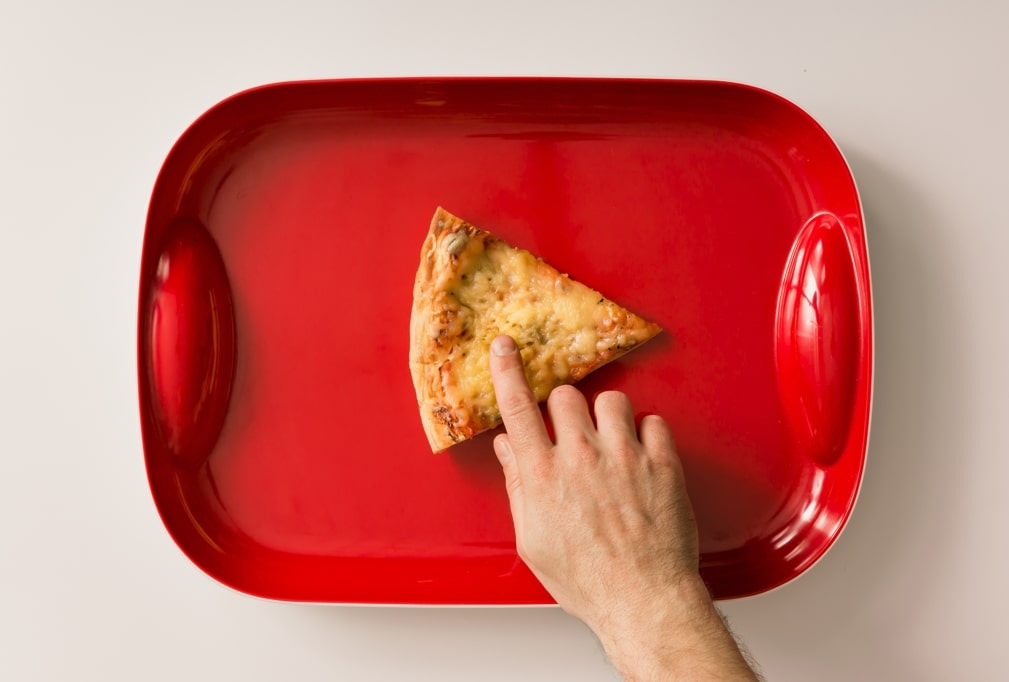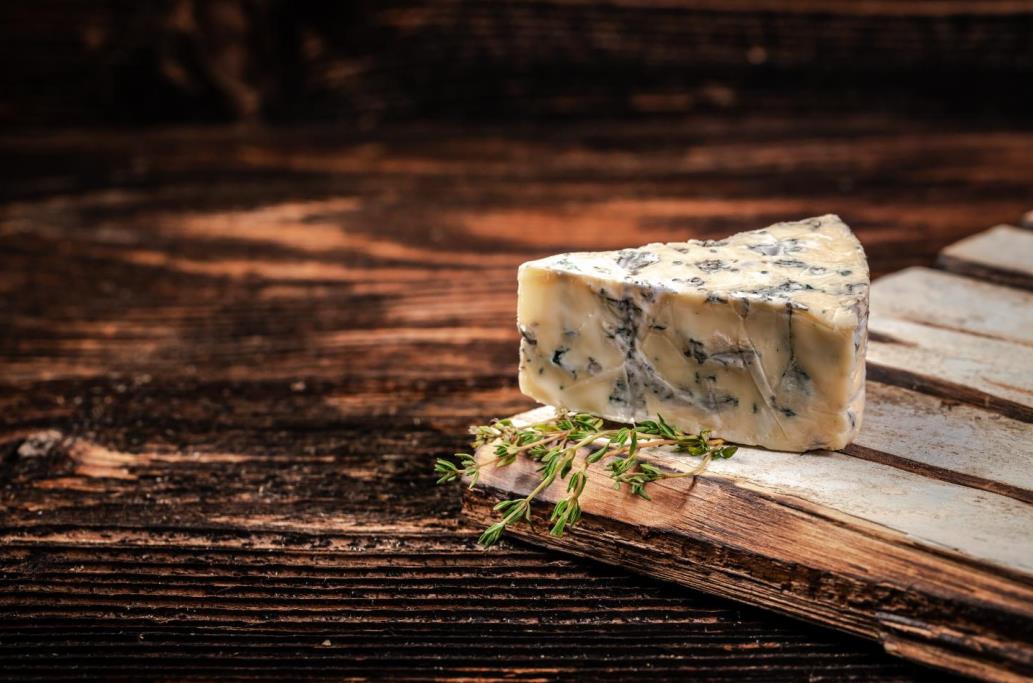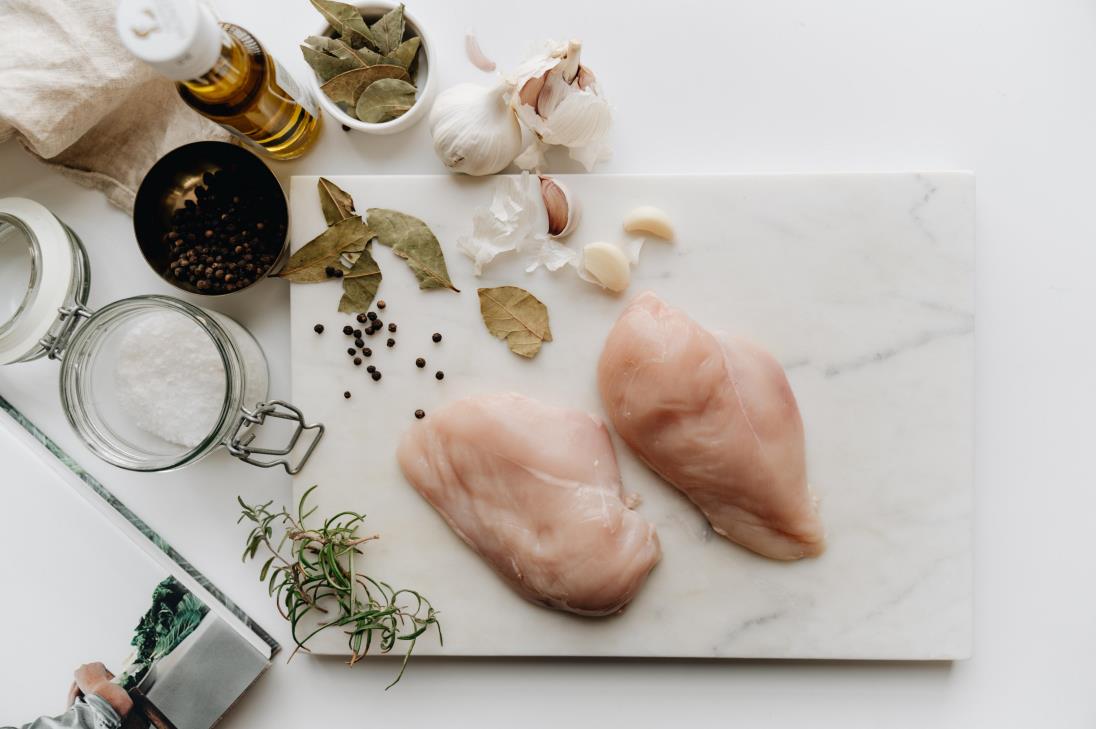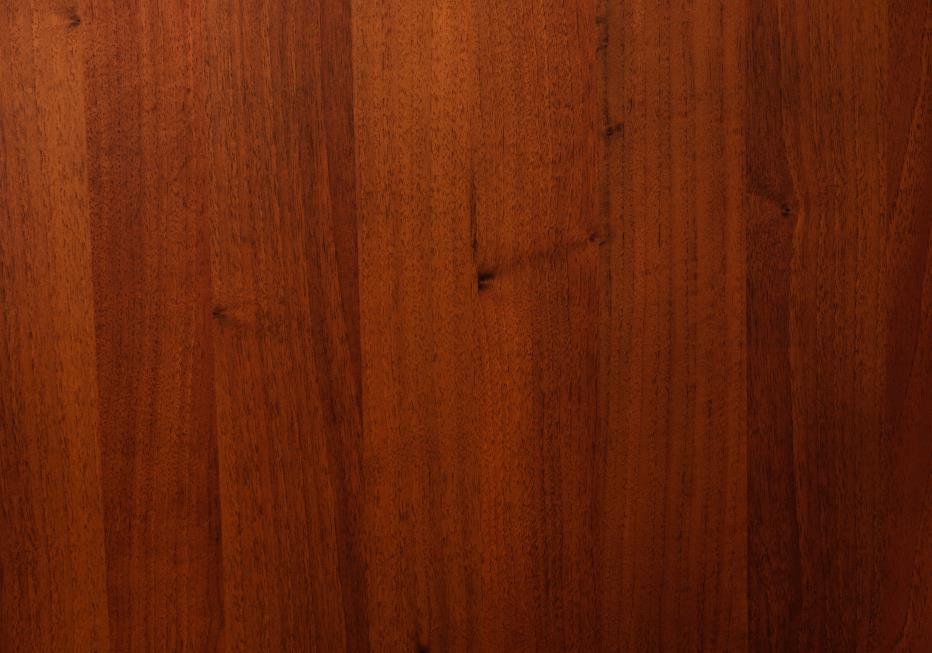Meatarians would known the importance of having the right tools to ensure every cuts of the meat is clean and juicy. One of the most essential tools is a good cutting board. However, not all cutting boards are created equal. Some are better suited for meat than others, as they are more hygienic, easier to clean, and gentler on your knives.
In this post, we will be exploring the best cutting boards for meat, so you can make an informed decision and elevate your meat preparation game.
Table of contents
What to consider when choosing a cutting board
Bacterial contamination
The reason to choose a hygienic cutting board is pretty self-explanatory. Bacteria such as E.coli and Salmonella can easily catch onto food and quickly make you sick if you are working with unsanitary tools.
Cutting boards that have a non-porous structure such as glass, or antibacterial properties can avoid that from happening.
Preserving knife edge
Cutting boards that are hard in nature will harm your knife’s edge. It is inevitable for a blade to lose its sharpness, but softer cutting boards will make this process happen slower.
Durability
Durability is also an essential part. You need to look for a board that doesn’t split, warp, or break easily under pressures.
Size and thickness
For cutting meat, consider buying at least a 0.5-inch thick cutting board, and the dimensions should be big enough to fit a leg of lamb. We use this estimate so you can effectively carve big pieces of meat. Furthermore, a thick cutting board won’t move as much as a thin one, so It’s important to make sure that the board is thick enough to stay in place when carving your meat.
Ease of maintenance
Plastic and composite cutting boards can usually be thrown into the dishwasher or cleaned by rinsing with water, but wood and bamboo cutting boards require manual labor and must be hand washed with dish soap and water thoroughly to remove residue.
Best cutting board for meat
Every material has its pros and cons. While a wood cutting board in general is the best option for cutting meat or being your main cutting board. Plastic cutting board, for example, can be a second-hand option as for meat cutting tasks. There is not a definitive answer to what’s the best cutting board for meat, and we will look into different options in detail below.
Wooden cutting boards
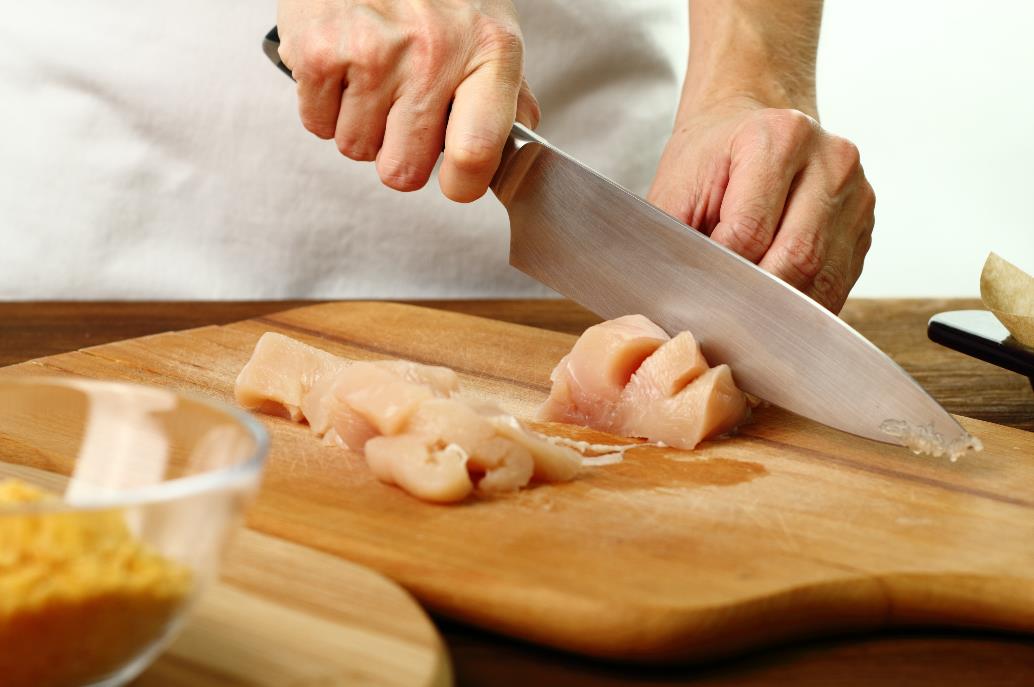
Wood is an excellent material for cutting meat due to several factors. Wooden boards offer natural antibacterial properties, are gentle on knives, durable, and beautiful. However, they require more maintenance than the others, can be absorbent and are not dishwasher safe.
Pros
- Natural antibacterial properties: Wood contains enzymes that can help kill off bacteria, making wooden cutting boards a safer option than plastic cutting boards.
- Durability: Hardwoods like maple and cherry are famous for cutting boards as they are durable and have a tight grain pattern that resists scratches and dents.
- Natural beauty: Wooden cutting boards can add a touch of warmth and natural beauty to your kitchen.
- Varieties: There are countless woods to choose from for your likings. Each with different appearances and characteristics.
Cons
- Absorbent: Wooden cutting boards are more absorbent. Meaning they can absorb liquids and food particles, increasing the risk of bacterial growth if not properly cleaned and maintained.
- Require maintenance: Wooden cutting boards require periodic oiling and thorough cleaning after each use to prevent drying out and cracking and to remove any trapped bacteria.
- Not dishwasher safe: Wooden cutting boards should not be put in the dishwasher, as the hot water and harsh detergents can damage the wood and shorten its lifespan. If it’s an old board, a dishwasher may break it.
- Cost: Wooden cutting boards can be more expensive than plastic, especially high-quality hardwoods.
Bamboo cutting boards
Bamboo cutting boards are a great option if you are interested in having durable, eco-friendly, and relatively cheap cutting boards. However, they may be hard on knives and require regular maintenance to prevent cracking and bacterial growth. It is also essential to choose a safe and chemical-free bamboo cutting board to ensure that it is safe for food preparation.
Pros
- Durability: Bamboo is a complex, dense material resistant to scratches and dents. The hardness of the bamboo cutting board is around 1400 lbf, landing within just the perfect range for a cutting board.
- Eco-friendly: Bamboo is a renewable resource that proliferates and can be sustainably harvested, making it an eco-friendlier option than other cutting board materials types of wood.
- Natural antibacterial properties: Bamboo contains natural enzymes that can help kill off bacteria, making bamboo cutting boards a safer option than plastic cutting boards.
- Lightweight: Bamboo cutting boards are generally lighter than other cutting boards, making them easy to handle and store.
Cons
- Can be hard on knives: While bamboo cutting boards are durable, they can also be hard on knives due to their density and can result in dulling or damage to the blade over time.
- Require maintenance: Bamboo cutting boards require periodic oiling and thorough cleaning after each use to prevent drying out and cracking and to remove any trapped bacteria.
- May contain harmful chemicals: Some bamboo cutting boards may be treated with chemicals such as melamine resin during the manufacturing process, which can be harmful if ingested. Choosing a reputable brand and checking the labeling is essential to ensure the board is safe and chemical-free.
Plastic cutting boards
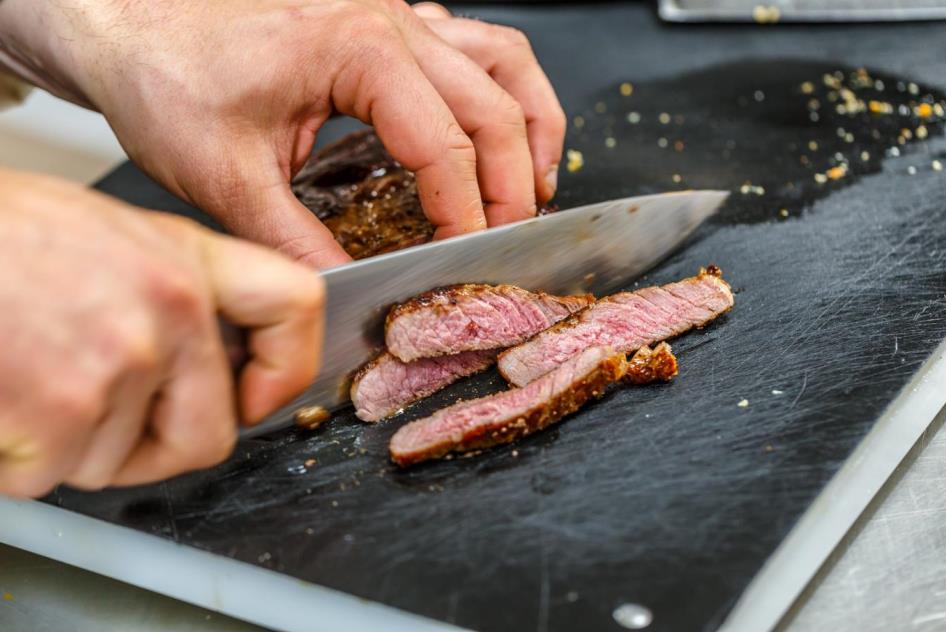
Plastic cutting boards are affordable and easy to clean for cutting and preparing food. However, they are less durable than wood or bamboo cutting boards and can be more prone to harboring bacteria, making them a less safe option for cutting meat. If you choose to use a plastic cutting board, it is crucial to replace it regularly and clean it thoroughly after each use to prevent bacterial growth. Additionally, consider using color-coded cutting boards to avoid cross-contamination between different types of food.
Pros
- Easy to clean: Plastic cutting boards are non-porous, easily cleaned, and sanitized with soap and water.
- Easy on knives: Plastic cutting board is a soft material. Which makes the surface gentle on knives.
- Affordable: Plastic cutting boards are often less expensive than other types, making them affordable for home cooks.
- Color coding: Some plastic cutting boards are available in different colors, allowing you to designate a specific color for cutting meat to avoid cross-contamination.
Cons
- Prone to damage: Plastic cutting boards can develop deep grooves and scratches over time, which can harbor bacteria and make them more challenging to clean.
- Not environmentally friendly: Plastic cutting boards are not biodegradable and can contribute to environmental pollution if not disposed of properly.
- Not as safe for meat cutting: Plastic cutting boards are more prone to developing grooves and scratches, which can harbor bacteria and potentially contaminate food, making them a less safe option for cutting meat than wood or bamboo cutting boards.
Composite cutting boards
Composite cutting boards are very hard on knives. It is vital to choose a reputable brand and check the labeling to ensure the board is safe and chemical-free. Additionally, they may be more expensive but also durable than other cutting boards.
Pros
- Durable: Composite cutting boards are highly durable and resistant to scratches and dents, making them a durable option.
- Non-porous: Composite cutting boards are non-porous, meaning they are less likely to absorb liquids and food particles than wooden cutting boards.
- Easy to clean: Composite cutting boards are easy to clean and sanitize with soap and water.
Cons
- Hard on knives: Composite cutting boards can be more challenging on knives than wooden cutting boards, resulting in dulling or damage to the blade over time.
- May contain harmful chemicals: Some composite cutting boards may contain chemicals that can be harmful if ingested, so it is essential to choose a reputable brand and check the labeling to ensure that the board is safe and chemical-free.
- Expensive: Composite cutting boards can be more expensive than other types of cutting boards, such as plastic or wooden cutting boards.
- Not as aesthetically pleasing: Composite cutting boards may not offer the natural beauty and warmth of wooden cutting boards.
Handpicked for you
True cutting power in the palm of your hand
Takeaway
In conclusion, it’s hard to determine the best cutting board for meat without knowing your priorities in the kitchen. But wood cutting board in general is a safe option for meat preparations.
Ultimately, the decision of which cutting board to choose comes down to personal preference. Furthermore, It is important to properly clean and maintain your cutting board to ensure its safety and longevity. By selecting the right cutting board for your needs, you can ensure that your meat is cut safely and efficiently and enjoy a successful and delicious meal.
To complement a meat cutting board, you need the best meat cutting blade as well. Find the sharpest handmade knives in our collection now.








